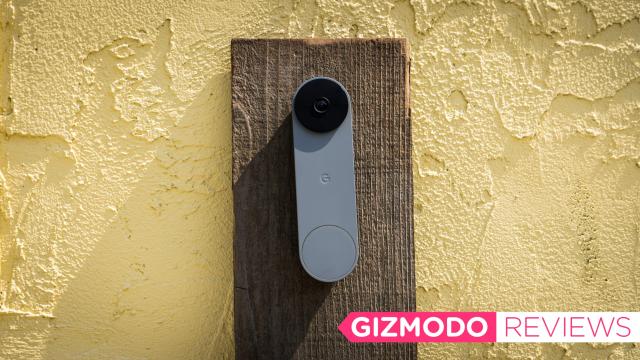Over the past few years, Google has been transitioning its Nest smart home brand away from a stand-alone company and bringing it into the Google fold. Now you can mix and match smart displays and other gadgets that connect to the Google Assistant as you see fit. This is convenient, to be sure, but it also has some drawbacks.
Take the new Nest Doorbell for example. The new model is cheaper than the first generation, sports an upgraded design, and is battery-powered, too. If you haven’t already bought into the idea of a doorbell camera and you’re looking for one that connects to Google, this is a solid one, though there are some caveats, especially for renters.
And then there’s legacy Nest users like myself, who might find themselves grappling with the nuances of the new Nest. Bringing this doorbell camera into an existing network of Nest devices reminded me that Nest is now fully a Google product. Google has been actively moving away from using the original Nest mobile app for connecting Nest gadgets, which I can accept, but still. Change is hard.
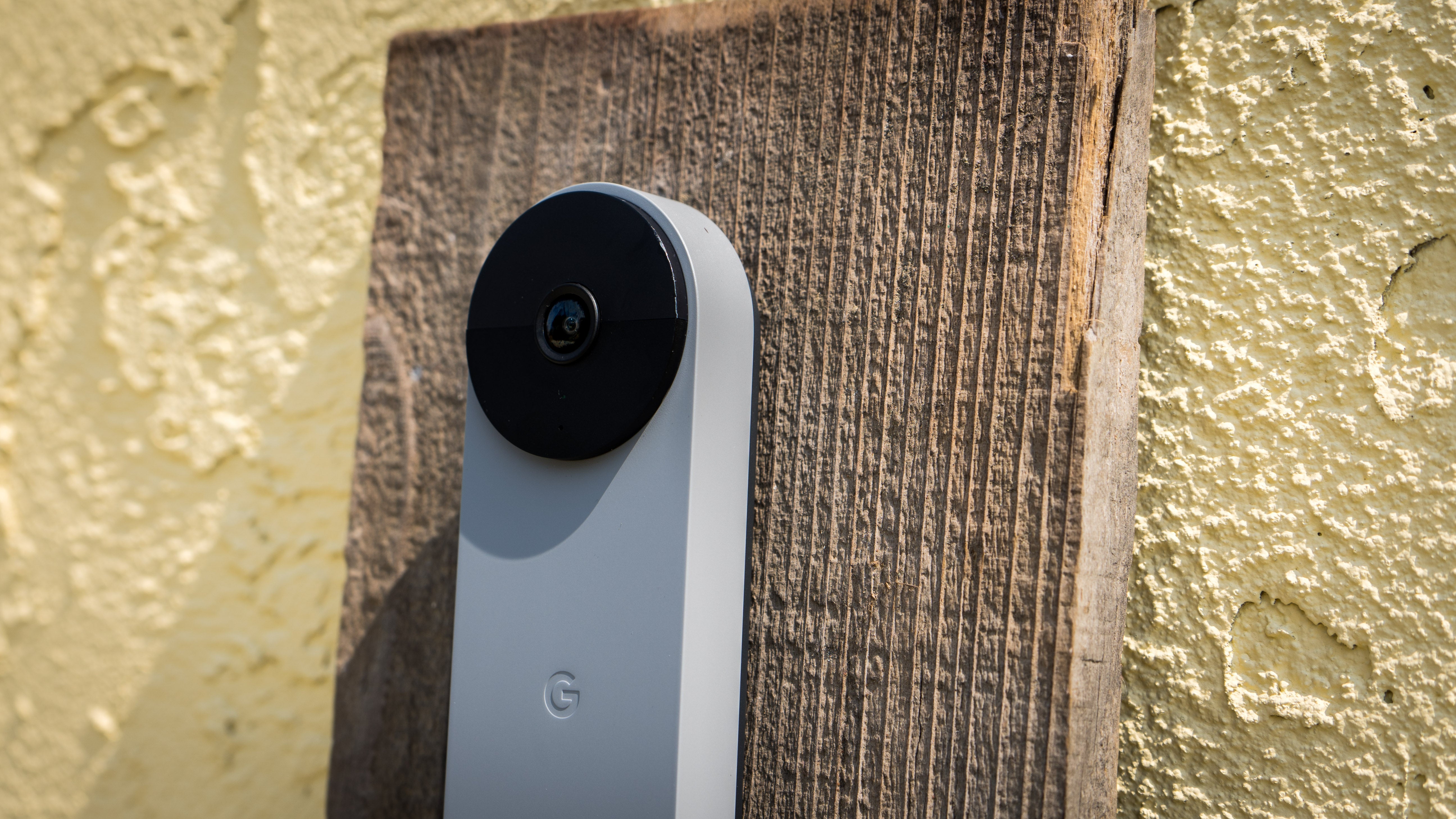
Google Nest Doorbell (2021)
What Is It
Google's battery-powered next-gen smart doorbell camera
Price
$US180 ($250)
Like
No-fuss setup process, on-device facial recognition, doesn't require chime-line
Dislike
Requires screws to install, camera preview can be slower to access, can only be used through the Google Home app
Editor’s Note: Stay tuned for local Australian pricing and availability.
A Thoroughly Modern Doorbell
I’ve been living with the original Nest Doorbell since it launched in 2018. I’ve appreciated its utility over the years and its cheeky holiday-themed chimes. It’s even moved homes with me. But I’m especially into it because it doesn’t look obvious and boxy like the Ring doorbell everyone else seems to have in the suburbs.
The new Nest Doorbell looks like a 21st century home accessory — almost too modern for my 1970s house. Its chassis is decidedly flatter than the previous generation, and it’s also a honker. It’s more than six inches tall, making it more prominent than the wired Nest Doorbell, which is a little less than five inches long. The difference is significant when viewed side by side, though it was seemingly a design decision to accommodate the battery pack.
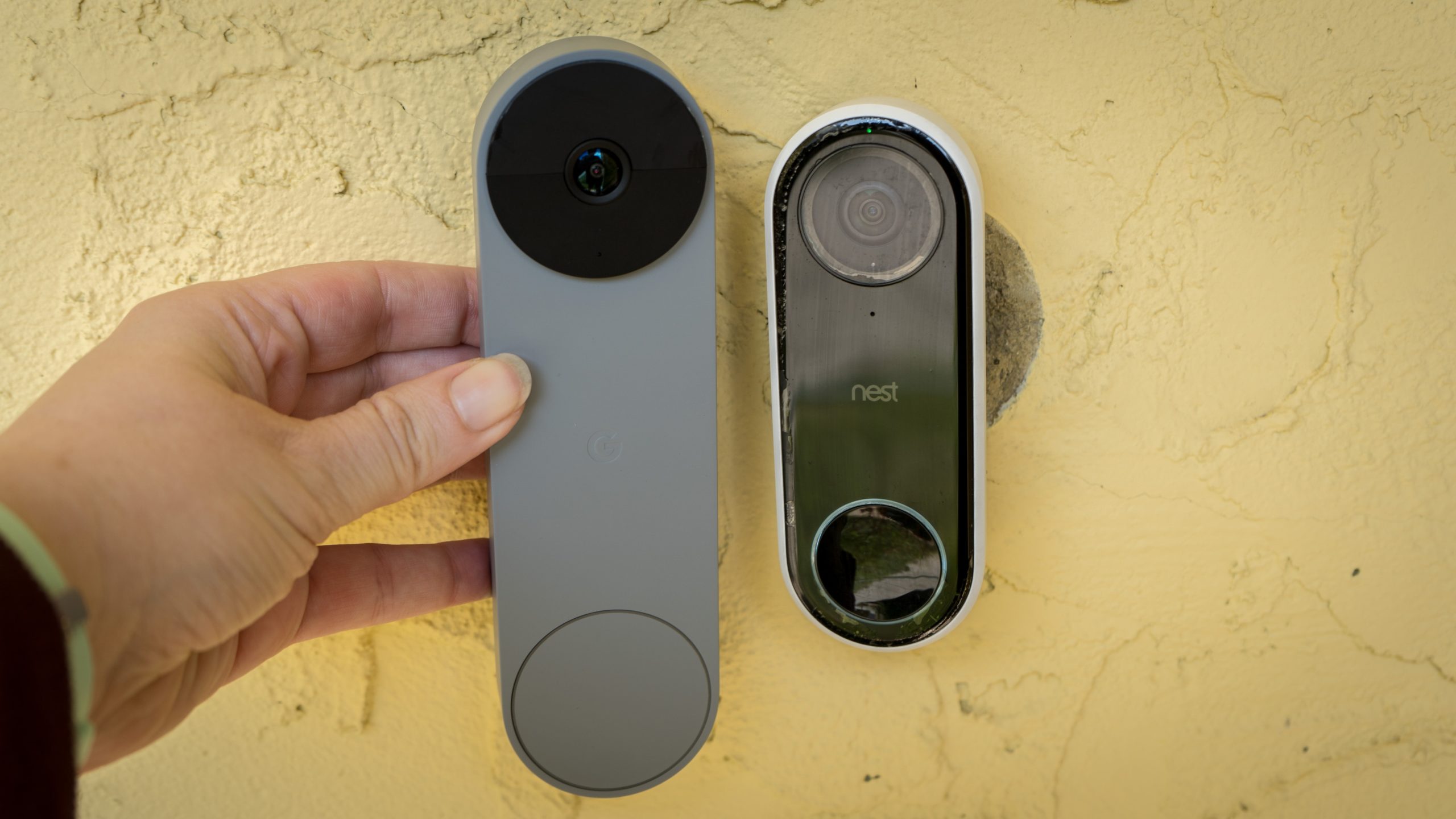
The rest of the Nest Doorbell features a matte chassis, which I’m hoping will fare better against hot, smoky California days than the glassy first-generation version, which now has warped plastic at the edge. Google provided Gizmodo a grey one for review, though it also offers the doorbell in white, beige, and a green-grey hue.
You’ll make some sacrifices with the new model compared to the old. The new Nest Doorbell features a 1.3-megapixel camera with 6x digital zoom and a 3:4 aspect ratio. The wired Nest Doorbell is equipped with a 3-megapixel sensor with 8x digital zoom. I specifically noticed discrepancies in the way each of the cameras handled light coming in — the second-gen Nest Doorbell was much more sensitive to it.
There is also a difference in resolution between the two. The Nest Doorbell camera’s maximum resolution is 960 x 1280, compared to the original’s 1600 x 1200 resolution. The upside is that you will save on both bandwidth and battery by opting for the lower resolution. The battery-powered Nest Doorbell camera has a 145-degree field of view, compared to the first-gen’s 160-degree field of view.
The wired Nest Doorbell comes with an accessory called a chime connector. It’s supposed to help with power management once it’s connected to the power line. It worked at my old townhouse, but not when I moved. As a result, I’ve been using the old doorbell solely with the Assistant-connected devices in my home.
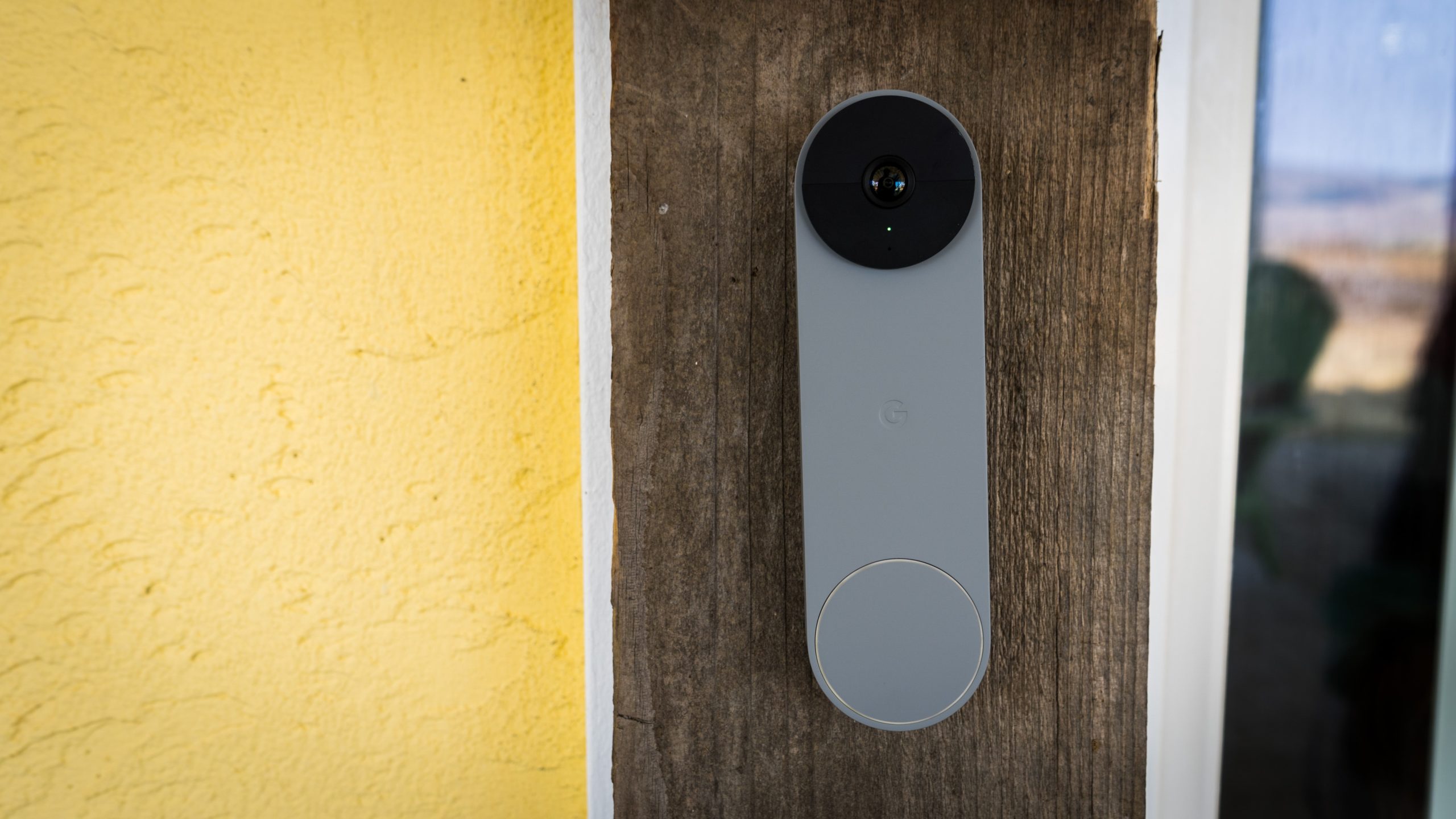
The battery-powered Nest Doorbell offers something similar to my workaround: You don’t need a wire to get the “bell” functionality working. However, it does require that you have Nest-compatible smart speakers and smart displays connected in your home. Otherwise, you’ll be entirely reliant on the Google Home app and mobile notifications to hear if anyone is at the door. The doorbell also offers an audible chime, but you might not always hear it if you live in a big house or work in a back room.
You can choose to hardwire the new Nest Doorbell, a decision that offers a key benefit: If it’s connected to your home’s built-in chime, so you’ll hear the doorbell when you’re inside the house regardless if you have Assistant devices. It also concurrently powers up the camera, so you’re not relying on the battery.
Not for Renters
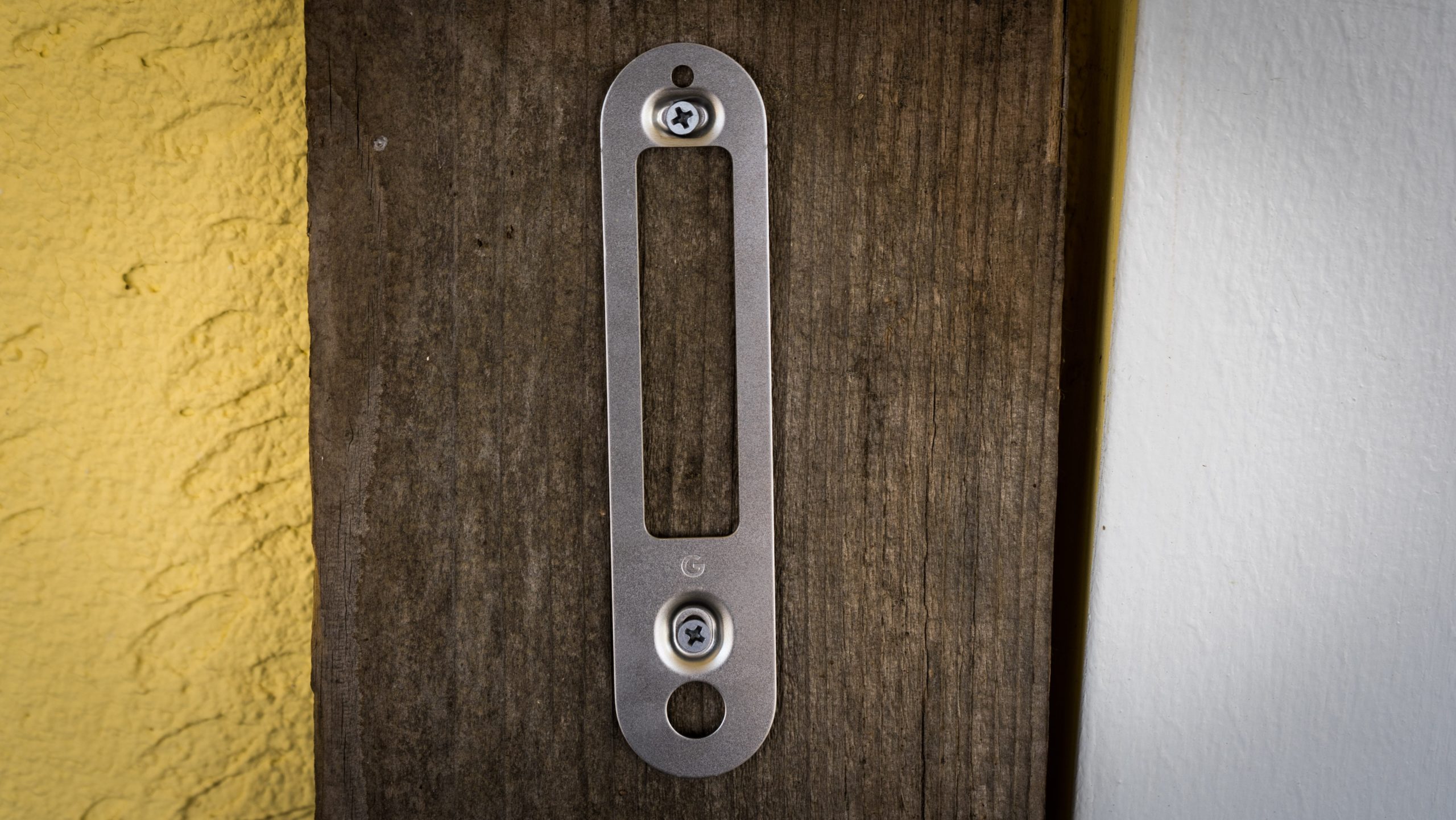
Depending on the exterior of your home or apartment, you won’t need a power drill to install the newest version of the Nest Doorbell. The Doorbell camera requires you to install a base plate, along with two wall anchors and screws, but it’s all possible with a standard Philips screwdriver. There’s a 20-degree wedge plate included in the box to angle the doorbell and spacers for slabbed exteriors, and there’s also a key to release the doorbell unit from its base.
What I didn’t see in the box was a way to install the doorbell without making holes. I’d expected something like the No-Drill mount from Amazon’s Ring Video Doorbell 3 and 3 Plus. You might be able to get away with a set of super-strong adhesive strips on the back of the doorbell without the use of a plate, because the back is nearly flat. But that would block off access to the USB-C port for recharging the device, and those outdoor-use Command strips are best when used once.
Google Account Required
The new Nest Doorbell requires that you have a Google account or a Nest account that’s been migrated over. Most longtime Nest users already switched over when Google force-enabled two-factor authentication for security purposes. If you’re new to the ecosystem, you won’t have to sign up for a Nest account at all. But if you’ve had Nest devices for a while, this might be where it gets confusing.
My husband, the owner of our Nest account and the name on the bill for Nest Aware, Google’s paid subscription service for continuous video-recording, was similarly confused by the changeover. We still use the original Nest app to control and check in on our existing security cameras. We have access to all those other devices in the Google Home app, including the thermostat and smoke detectors. But the menu structures are different for the security cameras between the two apps, including how you view and save video clips.
It’s not a dealbreaker, but having to convert to using the Google Home app is something to keep in mind if you’ve been using Nest security cameras for years. (It might be best to adapt now before Google kills it off entirely.) The Home app takes a while to scroll through the different rooms and devices that I have set up in my smart home before I get to the option to check on the backyard doorbell camera. I found this takes a while if I accidentally swipe away the motion notification and I want to peek in on the camera.
If you’re on an Android device, you get the added perk of the built-in ability to manage your smart home by long-pressing the power button. This mechanism will change in Android 12 when the smart home controls move to a dedicated settings tile in the notification shade — Google’s vision for an integrated experience.
Nest cameras and doorbells are still compatible with Alexa per a Google support page. However, the new Nest Doorbell camera didn’t appear as an option when I tried to pair the devices via an existing skill, because I paired the device through Google and not my Nest account. Google said the new doorbell is not compatible with Alexa at launch, which is another trade-off to make, depending on which voice assistant you prefer.
Battery-Saving Features
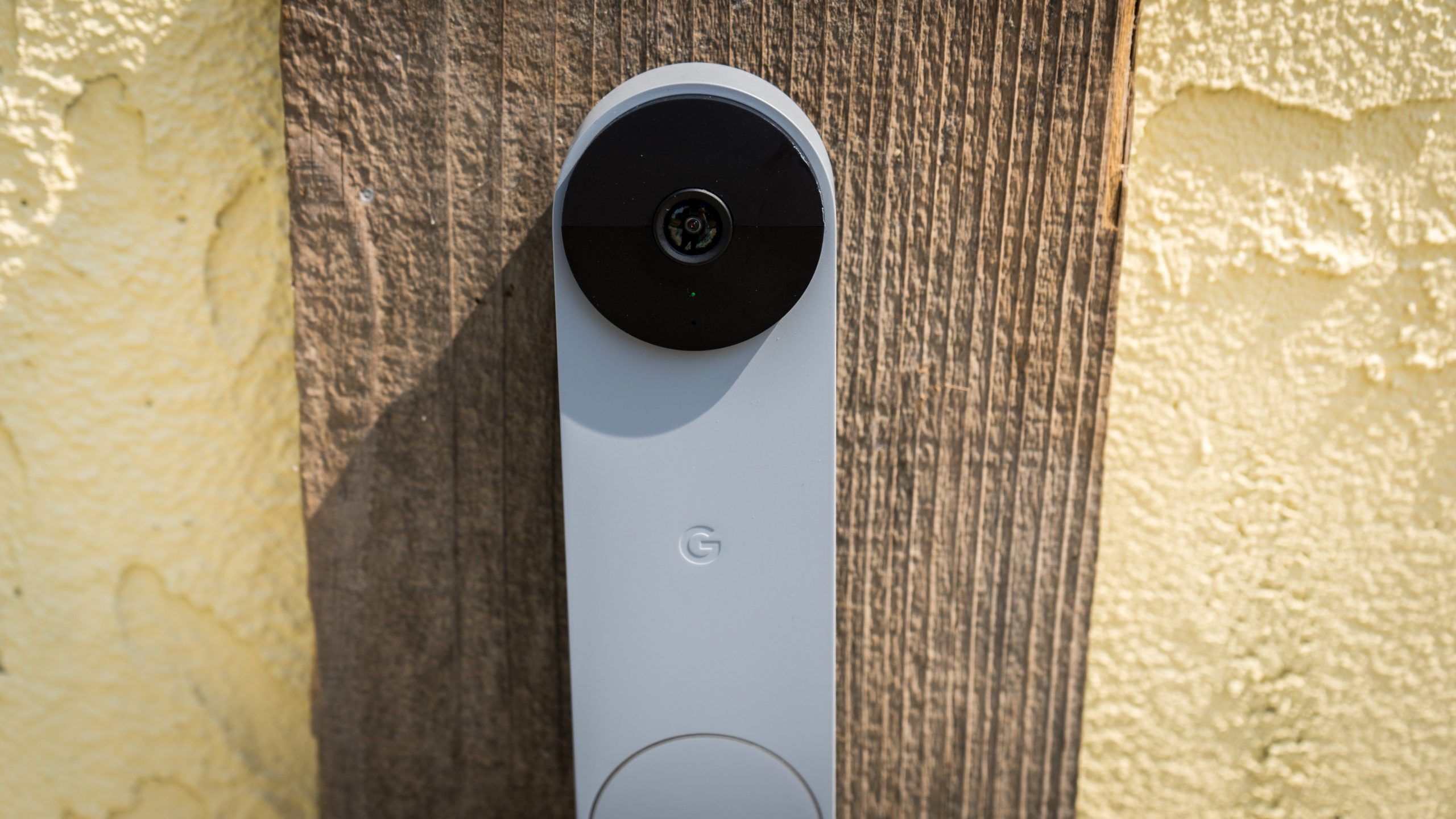
The second-generation Nest Doorbell works and functions like the four wired Nest cameras I have set up on my network. The benefit of this particular model is that it’s battery-powered and programmed for power-saving use. Sometimes it felt slower than my wired cameras, though. A few times, it took more than five seconds before a smart display could dial in the preview window to the battery-powered Nest Doorbell because the camera goes dormant when it doesn’t sense motion. That’s also why I didn’t have night footage to share during this review: Nothing happened to warrant the camera turning on to capture it.
The Nest Doorbell has an upgraded TPU chip that can recognise nine different objects without any cloud processing. It does most of its motion recognition offline, which can help save battery. You can go into the Google Home settings for the doorbell camera and adjust its sensitivity to various objects, including pets, people, vehicles, and packages.
I don’t yet have an accurate read on whether the on-device processing helps battery life in the long term. The Google Home app keeps you alerted to how much battery you have leftover when you log in for a peek at the camera. On my end, the battery says it should last for two weeks (I’ve been testing for about a week). You will have to remove the doorbell from its anchoring plate to charge the 6 Ah battery, which is kind of annoying because when the doorbell is off the plate, it turns off, and you can’t use the camera or doorbell unless it’s seated in its base.
The doorbell took about an hour to charge up 30%, so you’re not seeing smartphone quick-charging speeds here, but a couple of hours of charging every couple weeks isn’t the end of the world.
How the New Nest Stacks Up
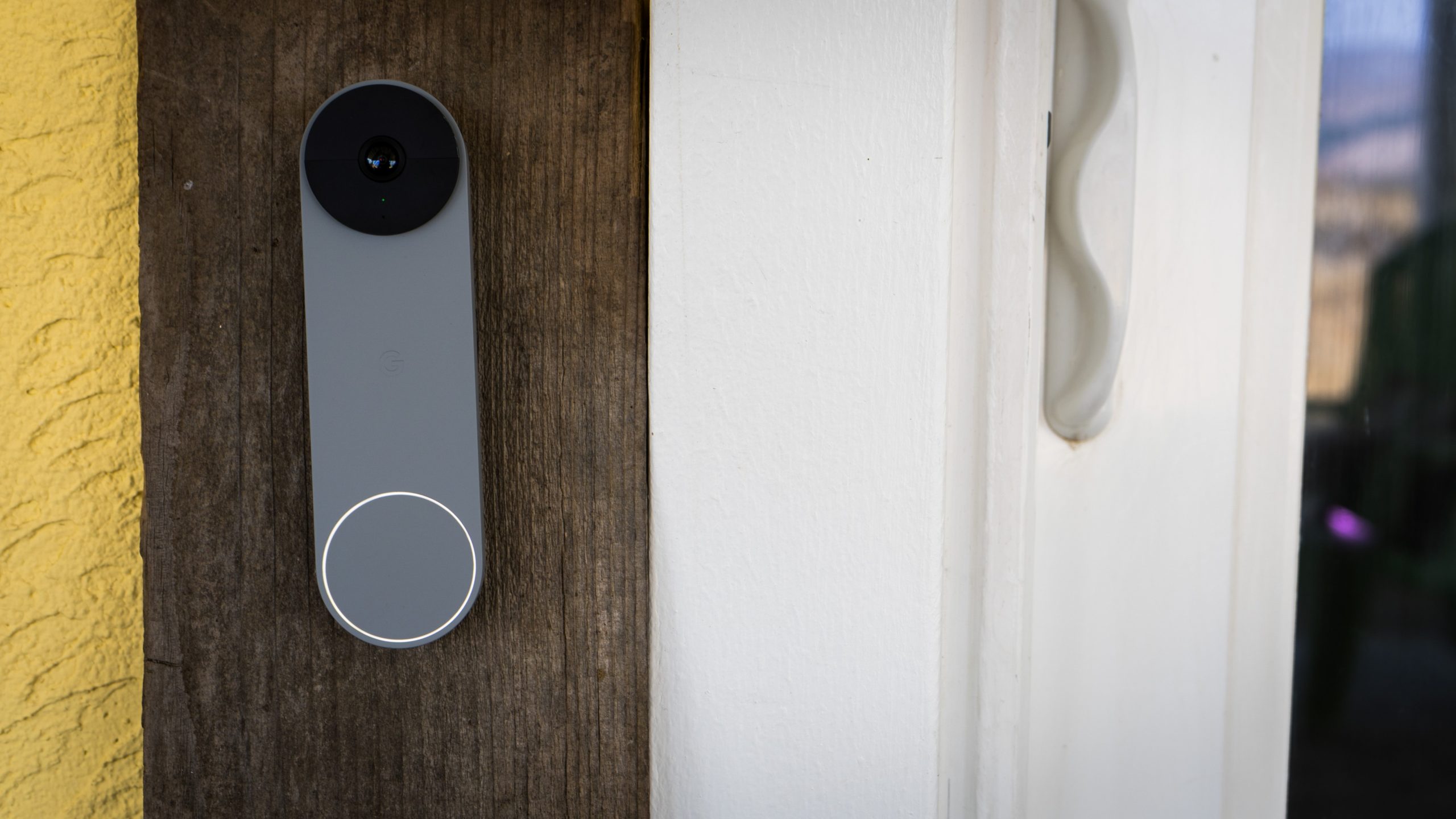
The battery-powered Nest Doorbell’s on-device processing means it doesn’t require a Nest Aware subscription to work. That subscription has two tiers: a basic plan for $US6 ($8)/month or $US60 ($83)/year that includes 30 days of event history, or Nest Aware Plus, which is $US12 ($17)/month or $US120 ($166)/year and offers 60 days of event history plus 10 days of 24/7 recording. The Nest Doorbell includes three-hour event video history by default and cannot continuously record video. That’s where it majorly differentiates from the wired version of the Nest Doorbell and why you’d choose that one over the battery-powered model.
The $US230 ($319) wired Nest Doorbell does cost a little more than the battery-powered one, but you get a device that’s constantly connected and thus, able to record video and sound around the clock. Many people don’t require that kind of surveillance at their door — or they don’t the ability to wire a doorbell — and that’s where the second-gen Nest Doorbell comes in. For $US180 ($250), you get the same Google-powered person and object recognition and seamless integration with the rest of the devices in Google’s ecosystem via the Google Home app.
The fact that person and object recognition happens on device instead of in the cloud is also somewhat reassuring from a privacy perspective, to a certain point. Using a Google product comes with its own specific drawbacks, and your Nest Doorbell footage can still be requested by police, though the company doesn’t have a way for police to request data directly from users the way Amazon Ring’s Neighbours social network does. Ring works directly with police, though the company recently added end-to-end encryption so users can prevent police from accessing their video footage without a request.
All in all, the new Nest Doorbell cam is fine, especially if you’re all in with Google Assistant, though there are other, cheaper, platform-agnostic doorbell cameras that offer similar features. As a long-time Nest user who has a fully Google home, I experienced some pains with this doorbell, so I recommend springing for the wired version if you can. The smaller profile and 24/7 recording are worth the extra money.
